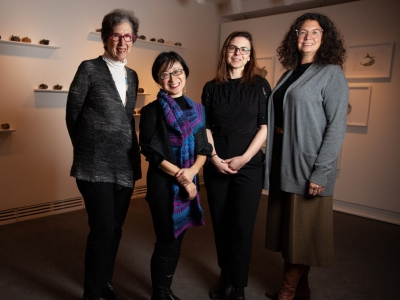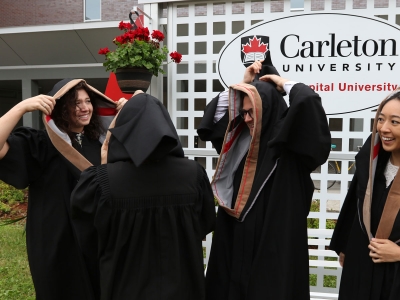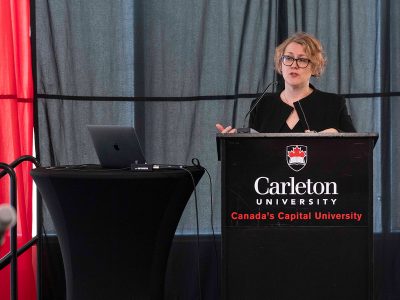By Matt Gergyek
If you asked your average working journalist how their profession connects to the field of humanities or vice versa, you’d probably leave them stumped.
The ancient worlds of Plato and Aristotle and the study of history, philosophy and art – the foundations of the humanities discipline – aren’t usually seen as intersecting with the multimedia toolkit of smartphones, livestreams and interactive articles at the heart of 21st century journalism, let alone directly connecting with them.
Rosa Saba, Carleton’s first graduate from the university’s recently launched four-year Bachelor of Journalism and Humanities program, would strongly disagree.
“I can’t imagine what I would be like as a journalist without the humanities program,” said Saba, who now works as a researcher and reporter for the Ottawa Business Journal (OBJ) and previously held the digital editor position at the Globe and Mail in Toronto.

The History of Ideas that Shaped the World
Saba said Carleton’s highly regarded journalism program was great at teaching her the who, what, where and when questions at the basis of journalistic reporting, but she credits the humanities program for encouraging her to seek out the why.
“Essentially, the program makes you critical and stops you from believing things full stop . . . It’s a history of the ideas that shaped the world,” Saba said. “Every single new idea or theory or worldview that’s presented to you, the first thing you ask is why.”
Today, when the journalism industry is constantly faced with accusations of false or biased news, Saba said remaining critical and sticking to the ethics of “old-fashioned” journalism by impartially including every perspective or stake in a story is extremely important.
“If you start being adversarial and push your personal beliefs out there as a journalist, you might feel like you’re doing the right thing . . . but you’re actually only reaching readers who agree with you . . . it’s a bubble,” she said.
Saba also points to the Charlatan, Carleton’s independent weekly student newspaper where she worked as a reporter, national editor and eventually editor-in-chief, for helping her grow as a journalist.
“I like to joke I would’ve switched out of journalism if it hadn’t been for the Charlatan,” she said with a laugh. “I got to make some of those first few mistakes everyone trying to be a journalist has to make and learn from.”
Journalism and Humanities: Teaching Journalists to Understand and Connect with the World
In the end, Saba said she feels her role as a journalist is to help people understand and connect with the world around them, working against ignorance. For Saba, this starts with educating herself about different sociocultural, racial and ethnic groups- she graduated with a minor in Religion, specializing in Islam and Christianity.
Saba said she hopes to continue her work as a journalist, shining a spotlight on overlooked issues and individuals. She has recently focused on covering the intricacies of Inuit artwork and giving a voice to minority groups within the Muslim community.
She recalled a recent interview with an Inuit artist based in Newfoundland and Labrador, which quickly turned into a two-hour conversation.
“At the end, she says: ‘Thank you so much for giving me a voice.’ It was one of those cheesy moments, but I was reminded that I really want to do this and I need to give this career a shot.’’
Friday, June 15, 2018 in Convocation, Humanities, Journalism and Communication
Share: Twitter, Facebook



